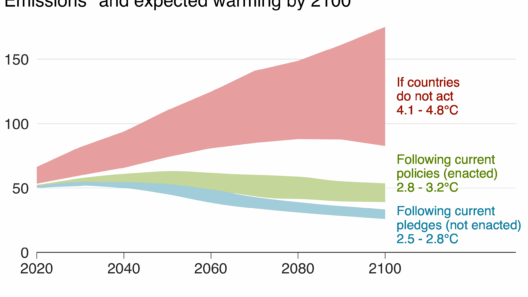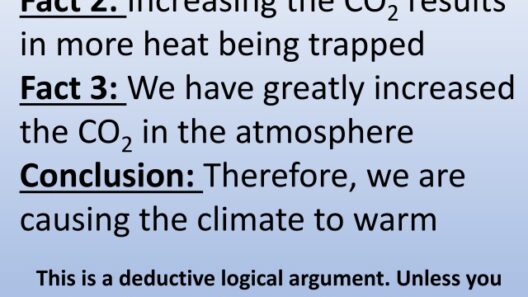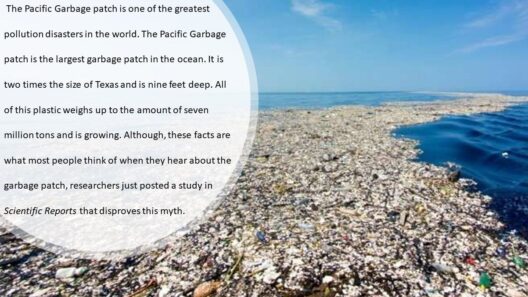Food security, a multifaceted and intricate concept, hinges upon the availability, accessibility, utilization, and stability of food sources. As the world grapples with the cascading effects of global warming, the threat to food security is becoming alarmingly manifest. The rising temperatures, erratic weather patterns, and increased frequency of extreme weather events are essentially reshaping our agricultural landscape, posing profound challenges to what we eat.
The primary impacts of global warming on agriculture can be seen anew through the prism of environmental variables. Increased ambient temperatures can lead to reduced crop yields. Many staple crops, such as wheat, rice, and maize, possess optimal temperature ranges for growth. Exceeding these thresholds can stymie photosynthesis, reduce crop fertility, and ultimately compromise food production. For instance, studies have shown that temperatures beyond 30°C can significantly diminish the yields of crucial crops by hindering their physiological functions.
Moreover, alterations in precipitation patterns contribute markedly to the unpredictability of agricultural productivity. Regions that were once characterized by reliable rainy seasons are now experiencing prolonged droughts or excessive rainfall, both of which can be detrimental to crop viability. In regions such as Sub-Saharan Africa, where agriculture heavily relies on rainfed systems, the intersection of changing rainfall patterns and elevated temperatures places smallholder farmers at grave risk. The ability to sustain local economies and maintain food supplies becomes increasingly tenuous as farmers face crop failure and reduced harvests.
Another pivotal aspect is the exacerbation of pests and diseases driven by global warming. Warmer climates provide a hospitable environment for many pests and pathogens that threaten crops. For example, the expansion of the range of the fall armyworm—a notorious pest that devastates maize fields—is partly attributed to changing climatic conditions. Such invasions not only diminish crop yields but also necessitate increased use of pesticides, which can have additional environmental repercussions, thereby creating a vicious cycle of dependency and ecological imbalance.
Soil health, a fundamental determinant of agricultural resilience, is similarly jeopardized by rising temperatures and changing precipitation. Soil degradation and erosion, exacerbated by extreme weather events, undermine nutrient availability and water retention capabilities, essential for sustaining crop growth. Additionally, the increased frequency and intensity of flooding can lead to waterlogging, damaging root systems and further complicating crop cultivation. The consequence is a downward spiral wherein food quality diminishes, leading to nutritional deficiencies among populations reliant on compromised agricultural systems.
As food security precariously hangs in the balance, socioeconomic implications are equally critical. Vulnerable populations, typically marginalized by poverty and limited access to resources, disproportionately feel the impacts of climate change on food systems. As crop yields diminish, prices soar, driving food beyond the reach of those already struggling to meet basic needs. This manifests in a heightened risk of malnutrition and associated health outcomes, particularly among children and other vulnerable demographic groups. Addressing these inequities is paramount, not only for individual well-being but also for fostering resilient communities.
Global warming doesn’t only affect food production; it also influences food distribution networks. In a world marked by interconnectedness, the decline in agricultural efficiency in one region can trigger global market repercussions. Disruptions caused by severe weather or logistical challenges can lead to price volatility and access disparities across different regions. For example, if a major grain-producing country faces crop failure due to unseasonable weather, it can result in ripple effects across the globe, influencing food prices and availability in distant markets. Thus, food systems must adapt not only to local challenges but also to the global ramifications of climate change.
It is essential to explore methodologies that enhance food resilience in the face of these impending threats. For instance, climate-smart agriculture emerges as a critical strategy. This involves practices that sustain productivity while adapting to changing climatic conditions. Techniques such as agroforestry, crop rotation, and irrigation optimization can bolster nutrient use efficiency and increase resilience to environmental fluctuations. Furthermore, promoting the use of drought-resistant seed varieties can serve as a buffer against the vagaries of climate change.
Additionally, fostering community-based approaches and local food systems can enhance food sovereignty and security. Strengthening local markets and encouraging diverse diets can reduce dependency on global supply chains. This can create a buffer against price shocks and provide more stable access to food. Localized food systems often entail shorter supply chains, which not only minimizes the carbon footprint associated with transportation but also stimulates local economies and promotes community well-being.
In conclusion, the threats posed by global warming to food security are both profound and pervasive. As climatic changes continue to disrupt agricultural practices, the implications for what we eat become increasingly complex. Addressing these challenges demands a multifaceted approach, leveraging innovation and adaptability to create resilient food systems capable of withstanding environmental turbulence. Only through concerted efforts can we hope to safeguard food security for future generations, ensuring sufficient, safe, and nutritious food remains a fundamental right rather than an elusive luxury.








